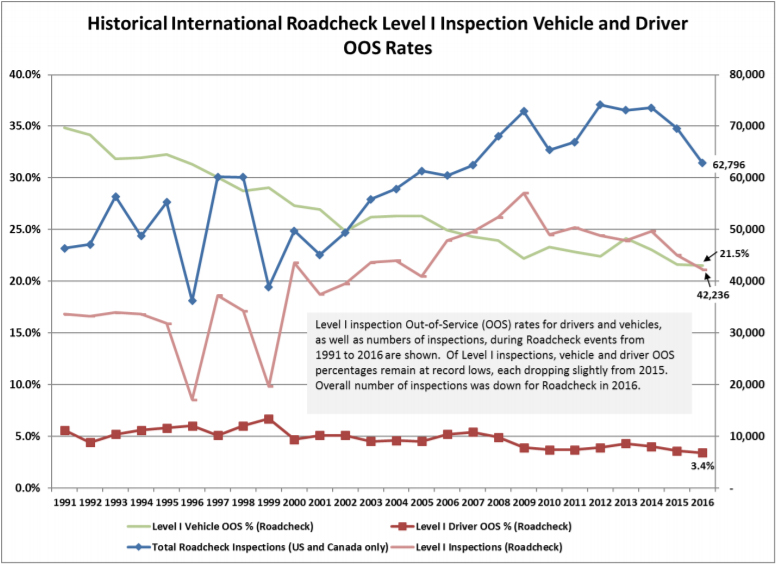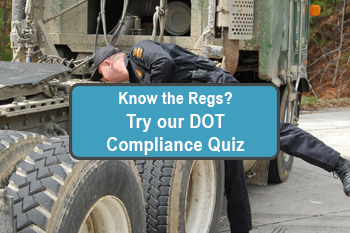
Cargo Securement Focus for CVSA’s 30th Annual International Roadcheck Enforcement June 2017
posted in Alerts by Brian Gray
Cargo Securement Focus for CVSA’s 30th Annual International Roadcheck Enforcement June 2017
CVSA’s (Commercial Vehicle Safety Alliance) International Roadcheck is the largest targeted enforcement program on commercial motor vehicles in the world. On average, there is nearly 17 trucks or buses inspected every minute in the U.S., Canada, and Mexico during the 72-hour. The next one will take place June 6-8, 2017.
Since its inception 30 years ago, more than 1.5 million roadside inspections have been conducted during International Roadcheck campaigns.
Each year, these roadcheck emphasizes on a specific category of violations. The focus for 2017’s International Roadcheck is cargo securement as a reminder of its importance to highway safety, according to CVSA.
 Inspectors will primarily be conducting the North American Standard Level I Inspection, the most thorough 37-step roadside inspection that includes an examination of both driver operating requirements and vehicle mechanical fitness.
Inspectors will primarily be conducting the North American Standard Level I Inspection, the most thorough 37-step roadside inspection that includes an examination of both driver operating requirements and vehicle mechanical fitness.
Be sure drivers can provide their driver’s license, hours-of-service documentation, motor carrier registration, and shipping documentation as it is required. Also, inspectors will be checking drivers for seat belt usage and the influence of drugs or alcohol.
The North American Standard Level I vehicle inspection includes the brake systems, cargo securement, coupling devices, driveline/driveshaft, exhaust systems, frames, fuel systems, lighting devices (required lamps), steering mechanisms, suspensions, tires, van and open-top trailer bodies, wheels, rims and hubs, windshield wipers, and emergency exits (on buses).
Last year’s 2016 International Roadcheck was focused on tire safety and conducted 62,796 inspections, of which 42,236 were Level I inspections. Of Level I inspections, 21.5 percent of vehicles and 3.4 percent of drivers were placed out of service due to critical item violations.
Regarding last year’s focus, tire/wheel violations accounted for 18.5 percent of the total percentage of out-of-service violations. As part of last year’s inspection process, inspectors measured tire tread depth, checked the tire pressure, checked to ensure no solid objects were lodged between dual tires, and examined the overall condition of the tire to make sure no deep cuts or bulges were found on tire sidewalls.






